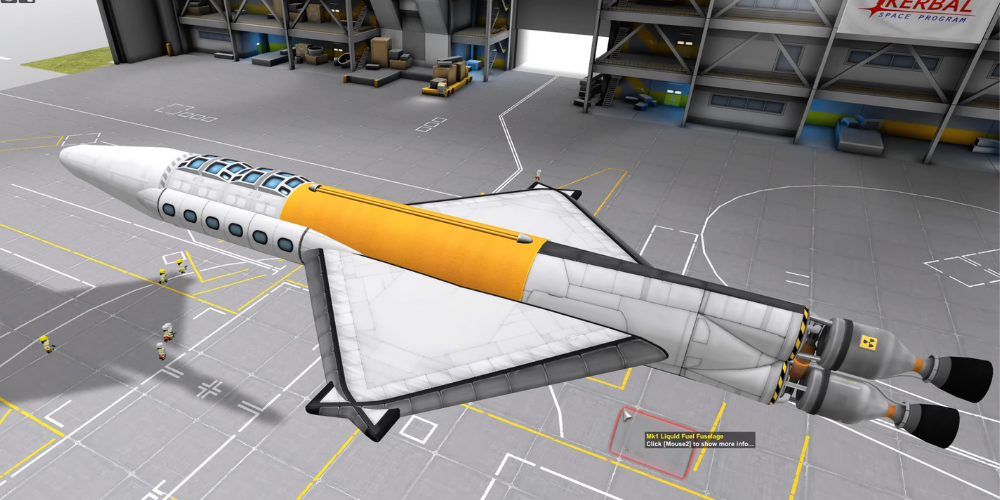Understanding Physics in "Kerbal Space Program"
- May 27, 2024
- 958

The 'Kerbal Space Program' (KSP) is a popular space flight simulation game that challenges players to design and manage their space program. Operated by fictitious little green beings known as Kerbals, the game is praised for its fun and engaging gameplay and its realistic application of physics in a virtual setting. In KSP, players encounter a realistic orbital physics engine that simulates real-time Newtonian dynamics. This piece delves into the fundamental physics principles depicted in the Kerbal Space Program (KSP), illuminating how mastering these ideas can elevate your enjoyment and proficiency in the game.
1. Gravity and Orbits
In KSP, gravity is the force that dictates the motion of spacecraft, planets, and other celestial bodies in the game. It draws inspiration from Newton's law of universal gravitation, which posits that each point mass exerts an attractive force on every other point mass, with the force directed along the line that connects both points. This law is fundamental in understanding how to navigate space in the game.
To orbit a planet or moon, you must achieve a delicate balance between the spacecraft's speed and the celestial body's gravitational pull. Too much speed and your craft will escape the planet's gravity; too little, and it will be pulled into a collision course. Mastering orbits in KSP requires understanding these dynamics and skillfully manipulating your spacecraft's trajectory and velocity. This element teaches players about orbital eccentricity and inclination and how to perform maneuvers such as Hohmann transfer orbits, concepts critical to real-world space navigation.
2. Aerodynamics

The behavior of vehicles in atmospheric flight within KSP also provides a robust lesson in aerodynamics. Players must consider aerodynamic efficiency when designing rockets and space planes to optimize fuel consumption and enhance vehicle performance. The game simulates atmospheric drag and lift forces, requiring players to design and manage their craft's configurations carefully.
Aerodynamic stability is critical when traversing through an atmosphere; a well-designed craft will minimize drag — reducing fuel consumption — and maximize lift, where needed. KSP players learn to use aerodynamic flight control surfaces like ailerons, rudders, and elevators to control pitch, roll, and yaw. These insights into aerodynamic principles add to the gaming experience and align closely with the complexities involved in actual aircraft and spacecraft design.
3. Spacecraft Propulsion and Thrust
Propulsion in KSP is depicted to mirror the challenges faced during actual space missions. The game includes a variety of engine types, each with specific thrust capacities, fuel requirements, and efficiency characteristics. Understanding how different engines work is essential for efficient mission planning. Players need to choose the appropriate engine based on the mission’s needs, whether achieving low Earth orbit, landing on a distant moon, or undertaking interplanetary travel.
Thrust-to-weight ratio (TWR) is a critical measure in KSP; it determines how quickly a spacecraft can accelerate. If the TWR is less than 1, the spacecraft cannot lift off. This scenario encourages players to perform calculations similar to those of real-world aerospace engineers to ensure their spacecraft can achieve the desired trajectory and objective.
4. Energy Conservation and Power Management

Effective energy management is another crucial aspect of the Kerpbal Space Program. Spacecraft in KSP need electrical power for various systems, including scientific instruments, communications equipment, and life support systems. Solar panels, fuel cells, and nuclear generators are among the options available to power spacecraft, mirroring the energy challenges faced in actual space missions.
The game teaches players the importance of energy conservation, especially during long-duration missions where resupply is impossible. Managing these resources efficiently can often mean the difference between mission success and failure, providing a practical lesson on the importance of sustainable energy use.
5. Physics of Weightlessness
'Microgravity,' often mistakenly referred to as zero gravity, is another physics phenomenon accurately simulated in KSP. Whether Kerbals are floating around in the spacecraft or objects being released into space, the game showcases how microgravity affects both living beings and mechanical operations in space.
In the game, players must consider how weightlessness impacts the handling of spacecraft, the behavior of fluids, and how missions are conducted. For instance, maneuvers in space are counterintuitive as there is no friction to stop motion, unlike on Earth. This introduces players to the intricate dance of spacecraft maneuvering, docking, and even extraplanetary landings.
6. Encounter and Docking Mechanics

A significant part of KSP involves rendezvous and docking operations, much like those conducted during ISS expeditions and other historical space missions. Players learn about relative speed and positioning adjustments essential for docking two spacecraft in orbit. This requires precise navigation and control and a strong understanding of orbital mechanics and timing.
Successful docking in KSP provides a hands-on understanding of the interaction between gravity, momentum, and the relative motion of orbiting bodies. These are complex concepts that are critical in many real-world aerospace operations, particularly those involving satellite deployments and orbital station maintenance.
Conclusion: A Platform for Aspiring Physicists and Engineers
Kerbal Space Program does more than entertain; it educates. By integrating real-world physics into its gameplay mechanics, KSP is an exceptional resource for students and enthusiasts eager to learn more about space exploration and aerospace engineering. Whether mastering orbital mechanics, understanding aerodynamic principles, or managing complex propulsion systems, the game offers a profound educational experience that parallels what one might encounter in professional aerospace scenarios. It blends entertainment with education, making it a unique tool for inspiring the next generation of scientists, engineers, and space explorers.